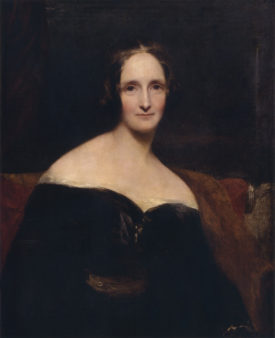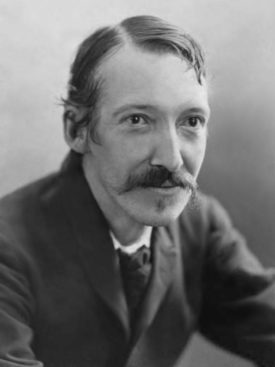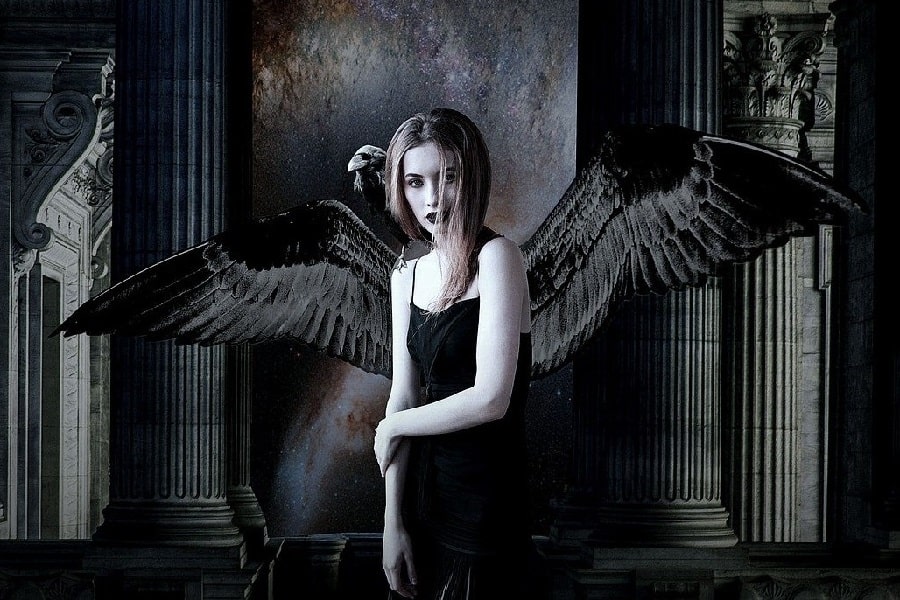Gothic fiction, which is largely known by the subgenre of Gothic horror, is a genre or mode of literature and film that combines fiction and horror, death, and at times romance.
Initially, the term “Gothic” was used in connection with the medieval architectural style that emerged in France around the 12th century. The first mention of Gothic literature appeared in The Castle of Otranto (1794) by Horace Walpole. As a subtitle, the writer indicated “a Gothic history”, hinting at its medieval origins.
Many of the key elements of Gothic literature are borrowed from the aesthetics of the Middle Ages, including similar themes and locations. Here are 10 key features of a Gothic novel.
1. Mystery and Fear
One of the essential features of a captivating Gothic novel is its ability to arouse the feeling of obscurity and fear. Everything that is beyond the bounds of scientific explanation opens the way to the incomprehensible, and the Gothic atmosphere but strengthens the flair of mystery. Many Gothic novels include such elements as a funeral, the flickering flame of candles, ominous potions and other frightening details. For example, in Ann Radcliffe’s novel The Mysteries of Udolpho (1794) the plot is built around Emilia Saint-Aubert, an orphan girl who has become an involuntary captive in a secluded castle. The thrilling events and the intense atmosphere of the novel defined the framework of the Gothic genre for the following years.
2. Atmosphere and Scene


The authors of the Gothic genre set the tone by carefully choosing the scene, since the atmosphere and surroundings in the Gothic novel directly affect the feelings of fear and anxiety. Authors often used dark forests, gloomy mountainous areas and ominous weather conditions in their novels. Castles, romanticized in the medieval period, played a large role in the early Gothic works. For example, Mary Shelley placed her characters in macabre cemeteries and gloomy castles, and even created a fantastic monster in her famous novel Frankenstein (1818). Many early writers found charm in exotic, unexplored territories. For example, in William Beckford’s novel Vatek (1786), a captivating story of an Arab caliph, the Middle East was chosen as the place of action, which contributed to the growing of interest of the Arab and Oriental culture.
3. The Supernatural and Paranormal
A large part of the Gothic literature’s charm stems from supernatural or inexplicable phenomena, such as inanimate objects becoming alive, ghosts, spirits and vampires, like the character of Bram Stoker’s Dracula (1897). A more modern example is the novel Beloved by Tony Morrison (1987). The story tells of a former slave named Sety and her youngest daughter, in whose house the ghost settles, presumably that of Sety’s oldest daughter who died at the age of two on her mother’s hands.
4. Signs and Spells
Prophecies in the form of visions, signs and curses are used in Gothic literature to hint at future events. Often, tragedy is preceded by an evil fate, destroying the life of the main character. For example, an object may fall and break, or a ghostly figure appears in the dark. Edgar Allan Poe uses this element in his short story Black Cat (1843). The superstition associated with the title is significant in itself, but Poe reinforces it by naming one of the cats after Pluto, the god of the dead in Roman mythology.
5. Nightmares
Nightmares are also an important feature of the Gothic novel. They have long been associated with prophecies and were used to enhance the impact of the plot. Dreams allow authors to express the emotions of their characters more directly. A good example is the novel A Bag of Bones (1998) by Stephen King, where the protagonist suffers from constant nightmares in which he sees the death of his wife.
6. The Villain


Paramount to various literary genres, villains play a predominant role in Gothic literature. In traditional Gothic novels the villain was usually a male character from an aristocratic milieu, often endowed with power, including that of a priest or king. Villains are psychologically complex characters that initially may cause sympathy, misleading the reader. Villains like the mentioned Count Dracula or Mr. Hyde from The Strange Story of Dr. Jekyll and Mr. Hyde (1885) by Robert Stevenson are both examples of such characters. By the way, the work of Stevenson is at the very junction of the Gothic novel and the psychological thriller – the literary genre, to which a separate article is devoted. To avoid confusion, we recommend that you also familiarize yourself with the article that lists the characteristic features of magical realism!
7. Emotional Suffering
Authors of Gothic novels often use melodramatic overtones to better express a thought. Such an exaggeratedly passionate language helps to portray the panic or fear inherent to many characters. The themes of madness or emotional torment can be encountered in many a Gothic novel, especially those depicting the state of psychosis. For example, Charlotte Gilman’s short story The Yellow Wallpaper (1892) was written on behalf of a woman suffering from postpartum depression.
8. The Antihero
Often, the protagonist becomes an antihero. Initially, protagonists we all male, but, as feminism gained strength, English authors such as Clara Reeve began to introduce female protagonists into literature. In Gothic novels protagonists usually have a high social status and physical attractiveness, but their fate is doomed as they are saddled with a terrible tragedy. Often they are easily influenced and dominated by passions. Classic examples of such protagonists include Catherine and Heathcliff from Wuthering Heights (1847) by Emily Bronte and Dorian Gray from Oscar Wilde’s The Picture of Dorian Gray (1890).
9. Romanticism
It is generally accepted that Gothic literature emerged from romanticism as the two genres share similar features. Many Gothic novels include a passionate romantic plot line that often ends in tragedy. The works of Charles Dickens are often tied around a romantic love affair, but also include awesome villains and Gothic entourage. In the Victorian era, sexuality was found in Gothic novels, an example of this is Edgar Allan Poe’s poem Annabelle Lee (1849).
10. A Virgin in Trouble
Gothic works often include a female heroine suffering in the hands of a villain. Her character is marked by sadness, weakness, loneliness; many of them were depicted as innocent virgins in early Gothic novels. The virgin is often shown defenseless, locked in a castle, subjected to poor treatment by a noble gentleman. An example of such a heroine is Horace Walpole’s Matilda whose unwavering devotion to her father ultimately makes her helpless.
The Gothic Novel Nowadays
Since the time of Horace Walpole, the Gothic genre has undergone numerous interpretations. Modern Gothic literature is very diverse, ranging from romantic ghost stories to gruesome horror. But its main elements – mystery, alarming uncertainty, signs, curses, and the other key components – continue to make Gothic literature attractive to the modern reader.
Do you have a favorite Gothic novel? What other characteristic features of the genre do you know? Make sure to share in the comments!
Tired of reading other people’s books? Learn how to write your own novel!





